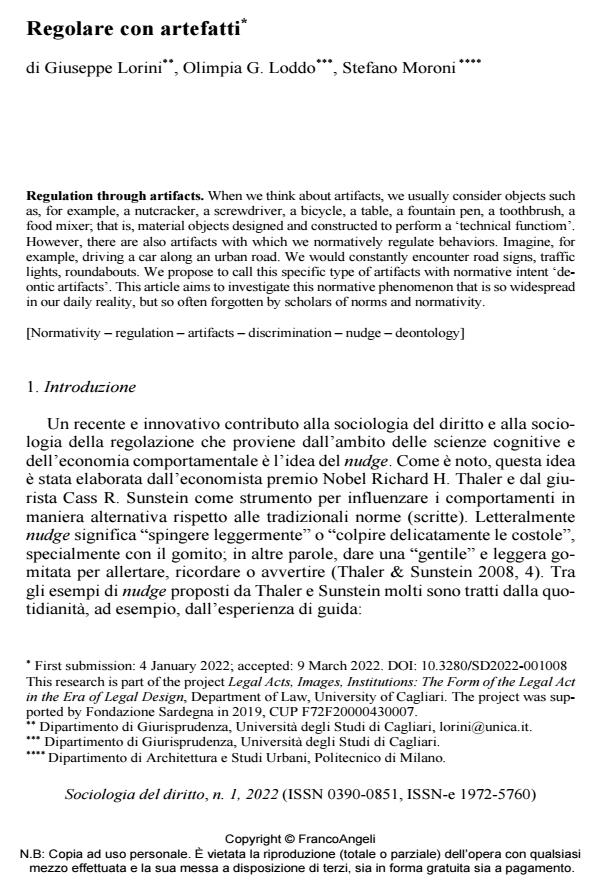Regolare con artefatti
Titolo Rivista SOCIOLOGIA DEL DIRITTO
Autori/Curatori Giuseppe Lorini, Olimpia G. Loddo, Stefano Moroni
Anno di pubblicazione 2022 Fascicolo 2022/1
Lingua Italiano Numero pagine 22 P. 173-194 Dimensione file 231 KB
DOI 10.3280/SD2022-001008
Il DOI è il codice a barre della proprietà intellettuale: per saperne di più
clicca qui
Qui sotto puoi vedere in anteprima la prima pagina di questo articolo.
Se questo articolo ti interessa, lo puoi acquistare (e scaricare in formato pdf) seguendo le facili indicazioni per acquistare il download credit. Acquista Download Credits per scaricare questo Articolo in formato PDF

FrancoAngeli è membro della Publishers International Linking Association, Inc (PILA)associazione indipendente e non profit per facilitare (attraverso i servizi tecnologici implementati da CrossRef.org) l’accesso degli studiosi ai contenuti digitali nelle pubblicazioni professionali e scientifiche
When we think about artifacts, we usually consider objects such as, for example, a nutcracker, a screwdriver, a bicycle, a table, a fountain pen, a toothbrush, a food mixer; that is, material objects designed and constructed to perform a ‘technical functiom’. However, there are also artifacts with which we normatively regulate behaviors. Imagine, for example, driving a car along an urban road. We would constantly encounter road signs, traffic lights, roundabouts. We propose to call this specific type of artifacts with normative intent ‘deontic artifacts’. This article aims to investigate this normative phenomenon that is so widespread in our daily reality, but so often forgotten by scholars of norms and normativity.
Parole chiave:Normativity - regulation - artifacts - discrimination - nudge - deontology
Giuseppe Lorini, Olimpia G. Loddo, Stefano Moroni, Regolare con artefatti in "SOCIOLOGIA DEL DIRITTO " 1/2022, pp 173-194, DOI: 10.3280/SD2022-001008